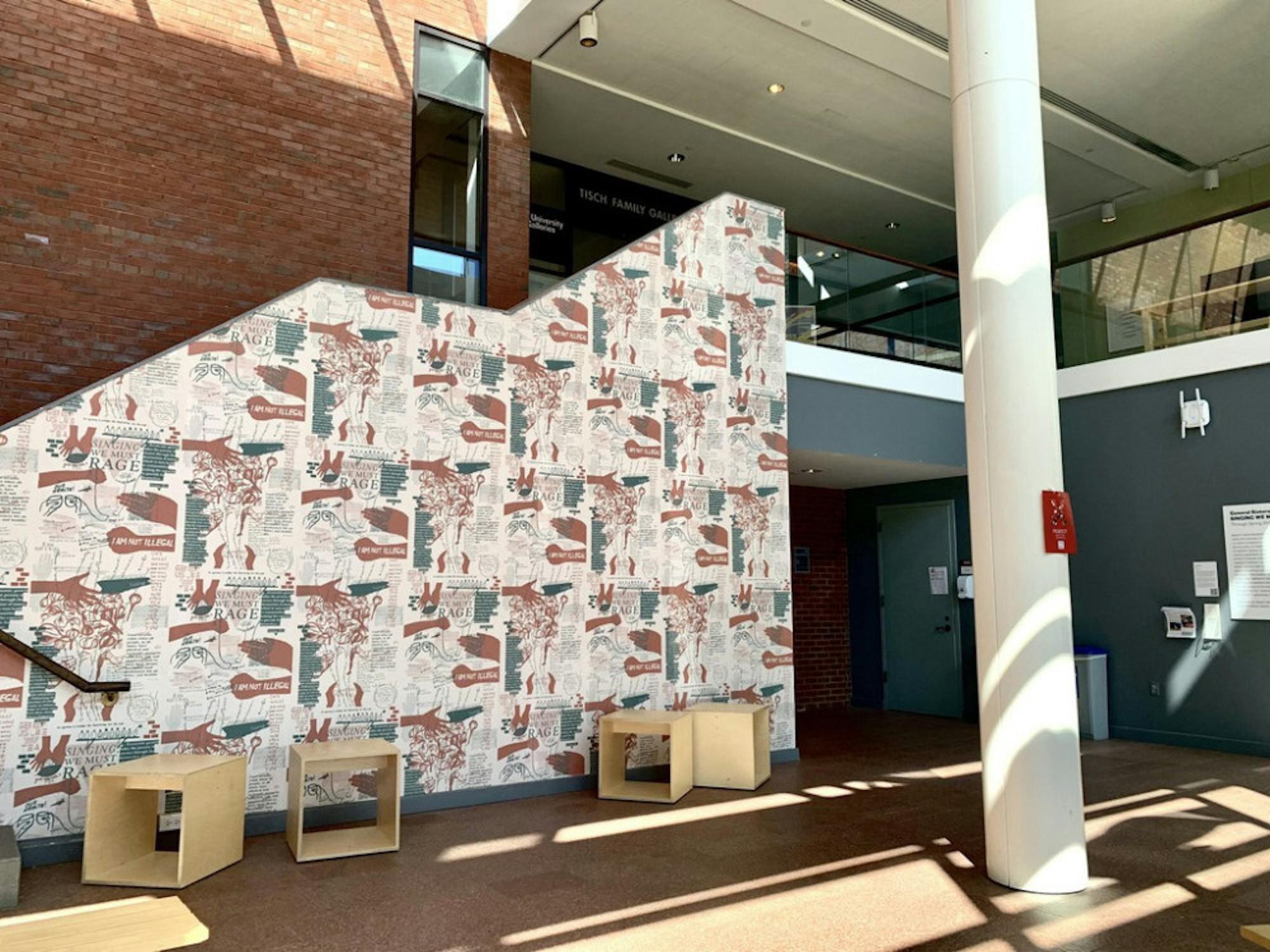The Tufts University Art Galleries, located in the Aidekman Arts Center and School of the Museum of Fine Arts, have switched to a virtual format to allow for remote participation in the galleries.
Since the fall semester, only members of the Tufts community have been allowed to visit the galleries in person. Additionally, the SMFA location for the galleries has remained closed. As a result, staff members at TUAG have implemented online programming to maintain and even increase visitation to the galleries.
Abigail Satinsky, curator of exhibitions and programs of TUAG, explained how the gallery utilized virtual tools to showcase art exhibitions.
“For our exhibition, Walls Turned Sideways: Artists Confront the Justice System, in Spring [2020] we had a number of materials (and were able to quickly add more) including videos, labels, and a 360 tour online on our TUAG app on Cueseum,” Satinsky wrote in an email to the Daily. "We were able to share out this incredible timely exhibition to audiences that missed it before we closed in March [2020]."
Other tools included Zoom and online webinars to contribute further to the conversations surrounding art and advocacy, according to Satinsky. One of these online programs is called “In Discussion.”
“['In Discussion'] brings together artists, scholars, community members, and civic leaders to talk about the most pressing issues going on right now,” Satinsky said. “Those have been incredibly well-attended and have included online discussions such as art & abolition, building racial equity in monuments and collections, the representation of Blackness in media, and mutual aid networks.”
Dina Deitsch, director and chief curator for TUAG, explained how the number of visitors to TUAG’s events fluctuates over the years, but observed that more participants have attended virtual events compared to past in-person exhibitions.
“Typically for a public program in person, [we] like to get 50 people,” Deitsch said. "What's been really fun about online is … we've been having 100 to 300 people at some of our major talks, which does not usually happen in person."
Deitsch attributes the increase in program participation to the availability of virtual programs.
“We make [the recordings] available for faculty and students,” Deitsch said. “So if people can't make the talk for a conflict, they can also reach out to us and access the Vimeo link.”
Kaelynn Maloney, department and curatorial assistant, also spoke to the importance of accessibility in increasing program participation.
“[One factor] is the accessibility of Zoom programs for folks to hop on to during the day or after work,” Maloney said. “We’ve also had the ability to host program participants and panelists, who we otherwise wouldn’t necessarily be able to, through Zoom.”
According to Deitsch, TUAG’s goal would ultimately be to find a way to maintain higher numbers of program participation in the galleries post-pandemic as well.
Although TUAG has seen increasing numbers of virtual program visitation, Deitsch hopes that this trend will continue post-COVID-19. She mentioned that many students do not know there is an art gallery on campus. As a result, developing greater visibility on campus is an ongoing priority for TUAG staff.
One of the strategies to increase awareness about TUAG is its student advisory board. Jillian Impastato proposed the idea last spring in order to foster community within the galleries as well as collaboration across different groups at Tufts.
“[With the student advisory board,] students can have agency themselves but also be connected to the different structures and staff members within the gallery [and] have collaborations with different groups on campus and with other university art museum student councils,” Impastato, a senior, said.
Maloney added that the student advisory board is currently working on efforts to increase student engagement and awareness about the galleries.
“We have 10 students now that are working on sort of a whole host of things with the galleries from exhibition to programming to social media output,” Maloney said. “We’re hoping that this initiative sort of builds this base of students that aren't necessarily studying art but are interested in how to make the galleries a space that functions for them too.”
Another strategy has included researching and tailoring TUAG’s programming to specific groups in the Tufts community. According to Maloney, the gallery recently worked with a student-run creative agency at Tufts called Imaginet to identify several key groups who may be interested in TUAG’s programming. Imaginet created consumer persona presentations as a way to explain the different types of students to which the programming would be catered.
“They identified the student activist, student learner, identity center peer leader, student artist, incoming students, student life coordinators, influencer, the event seeker,” Maloney said. “It was sort of like those different pockets of folks that may be interested in programming or exhibitions for X number of reasons.”
According to Deitsch, the galleries will continue working on increasing student engagement and public awareness about the galleries.
"I know people have a lot of different interests and I think it's really great for people to visit [the galleries] … We're excited," Deitsch said. "I think we typically have really interesting programming or pretty relevant programming, so it's always worth it."






